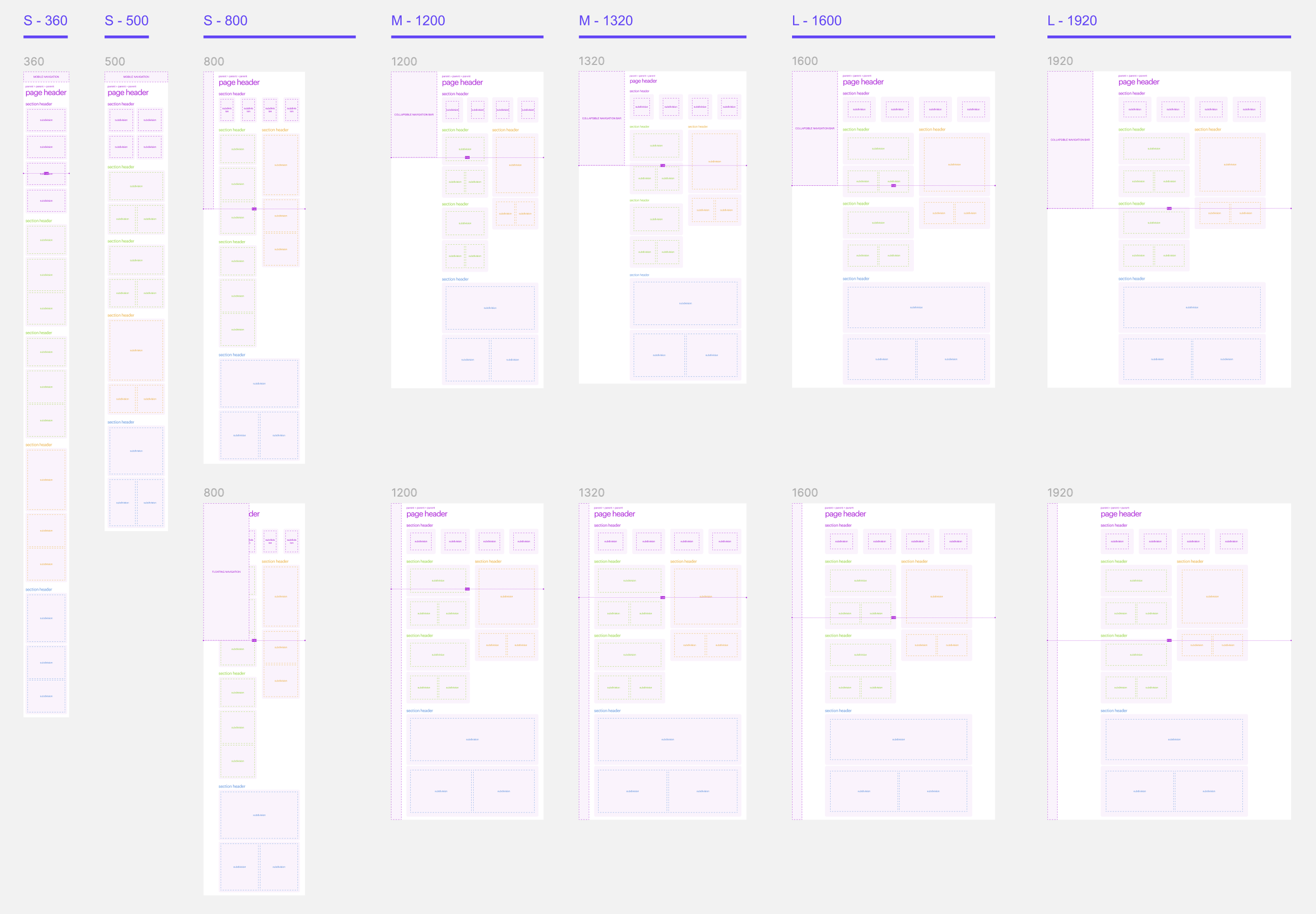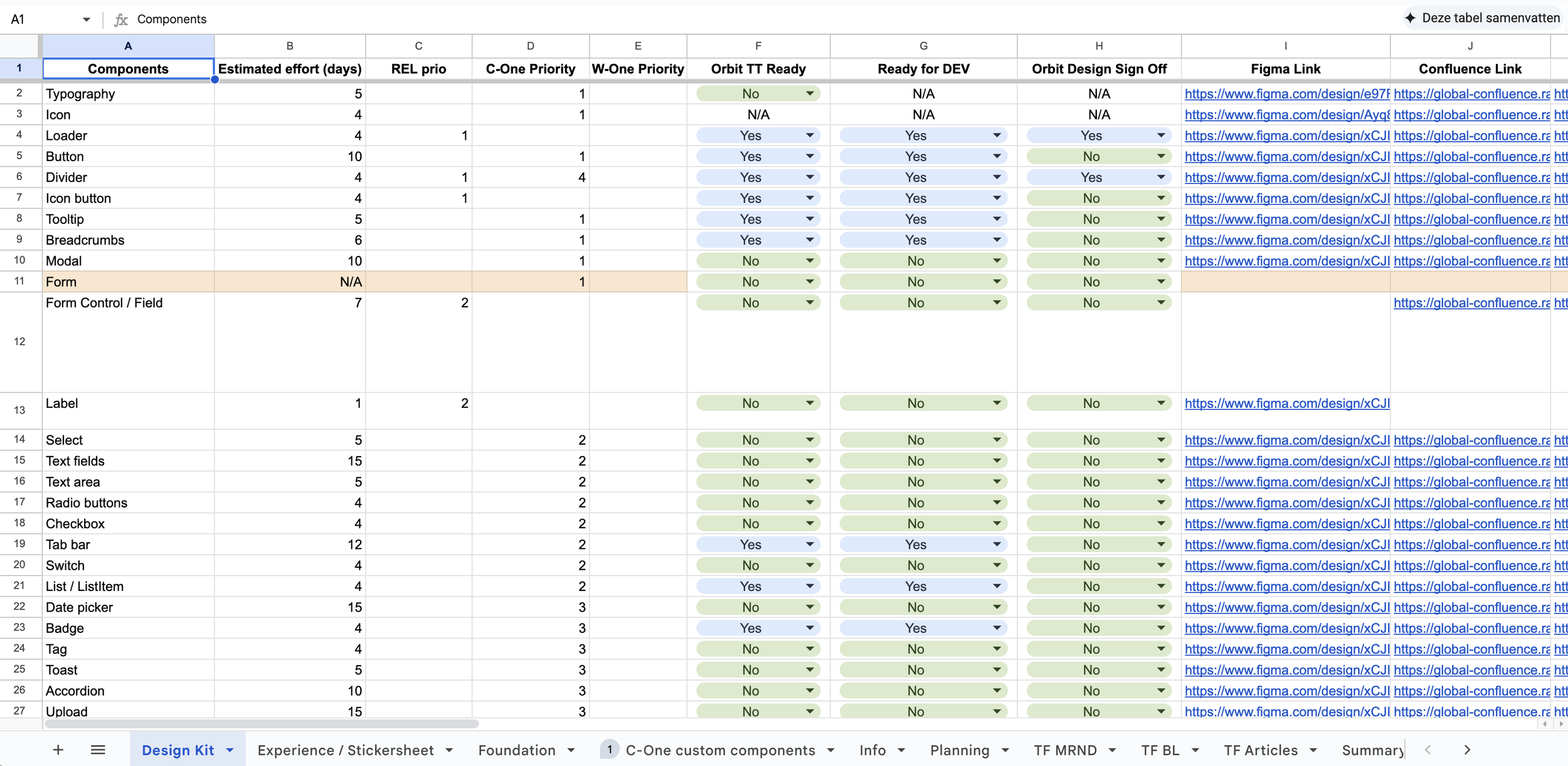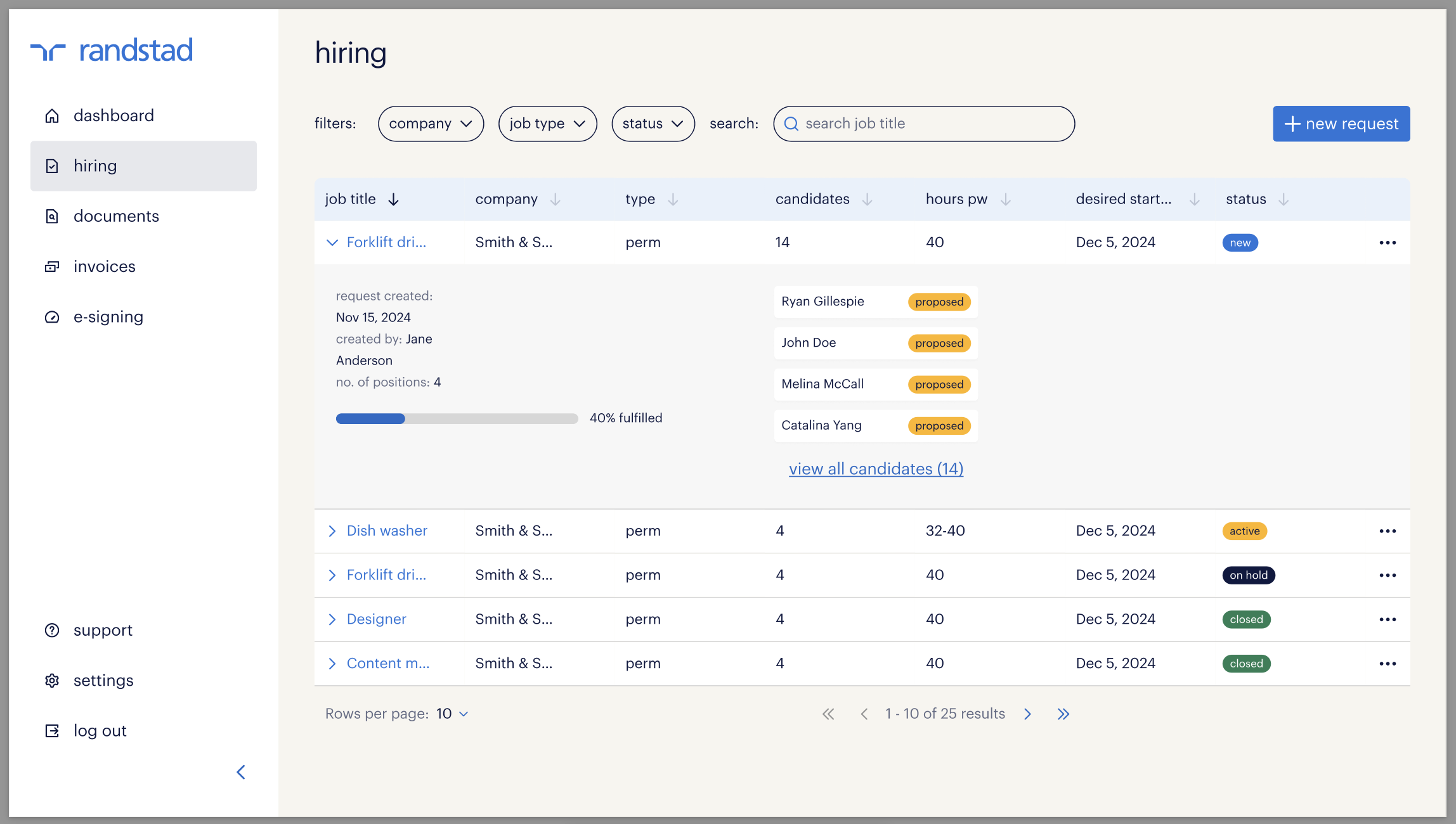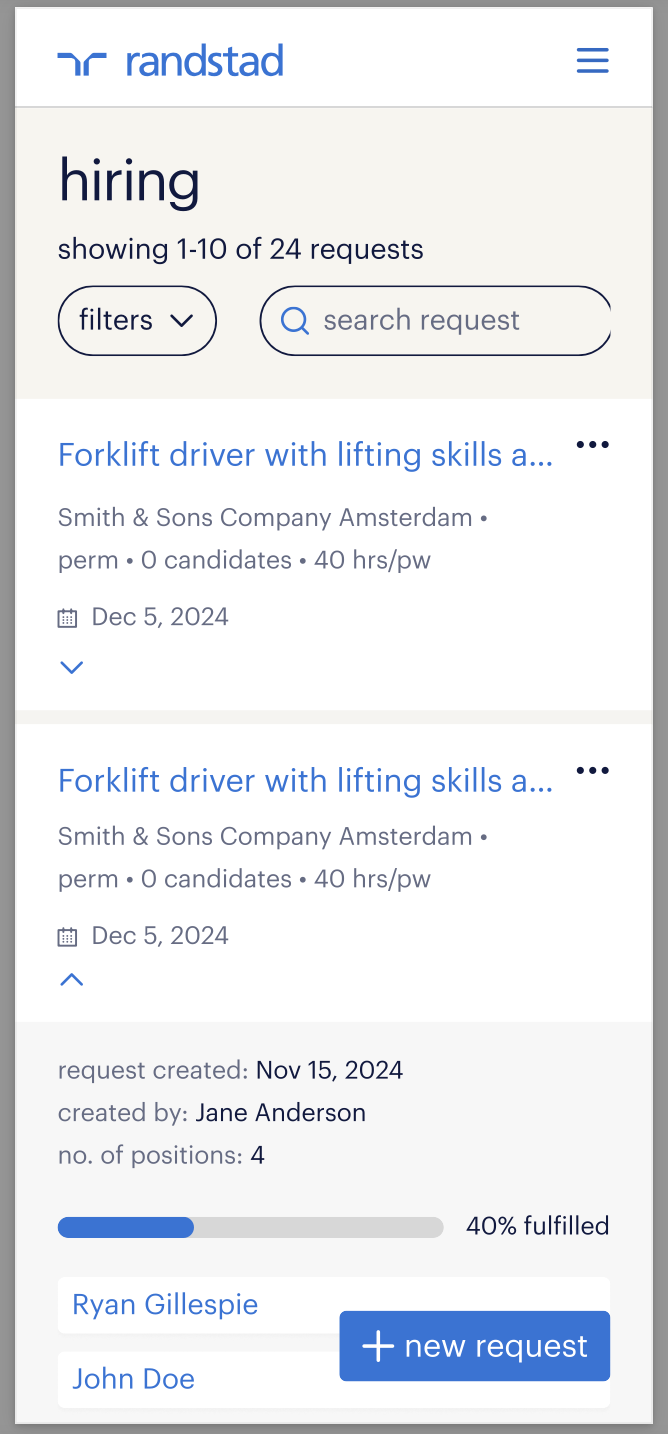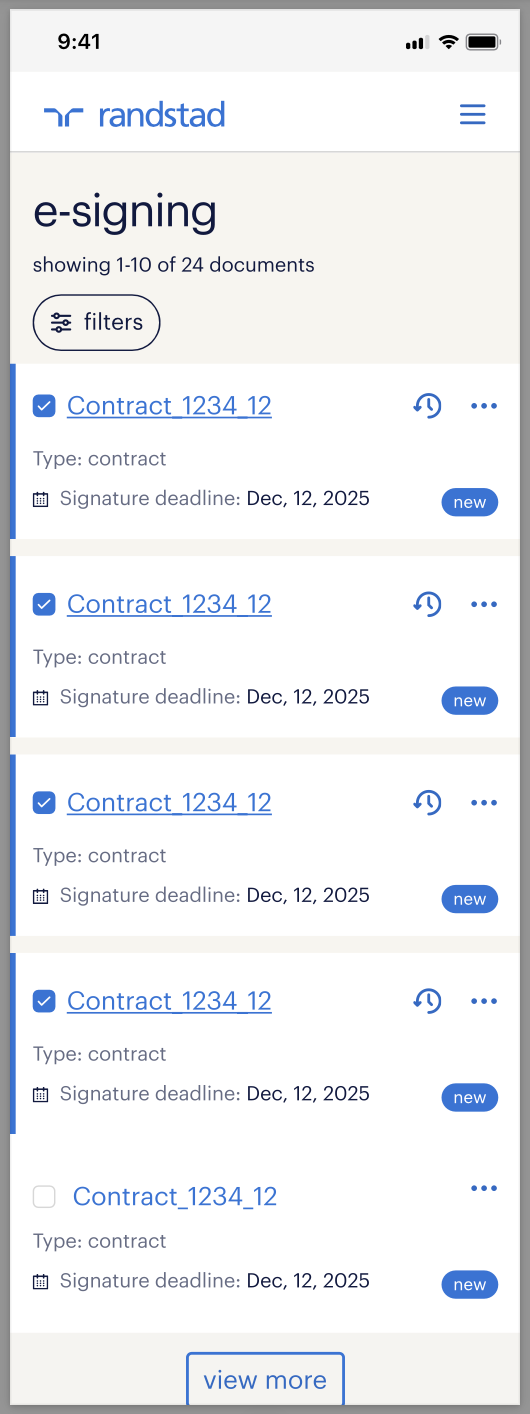Global Client Portal
My role in the rollout of the Global Client Portal was to lay a solid, future-proof design foundation. When I joined the project, I conducted a thorough assessment and advised linking the portal to the central Randstad design system.
This strategic turning point led to a completely new start, where I was responsible for designing a responsive grid, optimized navigation, and reusable custom components. This project resulted in a scalable, accessible, and uniform portal that is ready to be rolled out globally to 38 countries.
Phase 1: A Strategic Re-alignment of the Global Client Portal
When I joined the project for the rollout of the Global Client Portal, an initial design direction had already been set. My first task was to conduct a thorough assessment of the existing designs to evaluate the project's state. The outcome of this analysis was a strategic recommendation: to make the portal future-proof, it was essential to link it to the central Randstad design system.
This meant I was tasked with establishing a new design foundation. This included designing a new grid and navigation and creating custom components for unique views. This approach transformed the portal into a scalable solution that can be easily applied to multiple brands, and created a single point for all future design and code development.
Phase 2: The Responsive Foundation
In this phase, my focus was on building the fundamental components of the portal. The core task was to design a new responsive grid system and an optimized navigation. The primary goal was to ensure the portal would provide a smooth and intuitive experience on all devices, especially on mobile, so clients could easily perform crucial tasks like requesting personnel.
I worked closely with the Design Manager, a Strategic Designer, and another UX Designer to make the right strategic and creative decisions.
Phase 3: Collaboration and Enriching the Design System
In this phase, I worked closely with the development team and the design system team to map out the necessary components for the portal. The focus was on a strategic approach to the design: we inventoried which components were already available and which unique, custom components we needed to build. This was crucial to prevent resource waste and ensure consistency.
Furthermore, the collaboration ensured that the newly designed components were made reusable and were added to the central design system. In doing so, we not only created a robust solution for our project but also made a valuable contribution that increased efficiency and scalability for other teams within the organization.
Phase 4: Building a Scalable and Responsive UX Foundation
In this phase, the focus was on actually designing the portal within the new design foundation. The biggest challenge was making the responsive grid system work and translating the desktop experience to mobile. To achieve this, I used cards as a scalable component that simplified the interface on mobile.
An even bigger challenge was tackling the heavy data tables, which played a crucial role in the portal. I worked on making these complex tables responsive and developing specific interactions that function well on both desktop and mobile. This required close collaboration with another UX Designer to find innovative solutions that offered a consistent and usable experience on any screen.
Phase 5: Implementation & Collaboration with Offshore Teams
After finalizing the designs, the crucial implementation phase began. My role was to bridge the gap between the design vision and the technical reality by working closely with our offshore development team.
I served as the central point of contact for the team, clarifying design specifications and ensuring the designs were built to perfection. Through continuous communication and answering questions about interactions and responsive views, I guided the implementation and ensured the final product met our quality standards. This collaboration was essential for the successful launch of the portal's first version.
Outcome:
The project culminated in the successful delivery of an entirely new global client portal. The result is a robust and scalable application ready for rollout to 38 countries.
This new design foundation resulted in a portal that is not only responsive for a seamless experience on any device but also meets the latest accessibility standards (WCAG 2.2). By integrating with the central design system, the portal is also fully scalable for multiple brands, which ensures long-term implementation and consistency.

